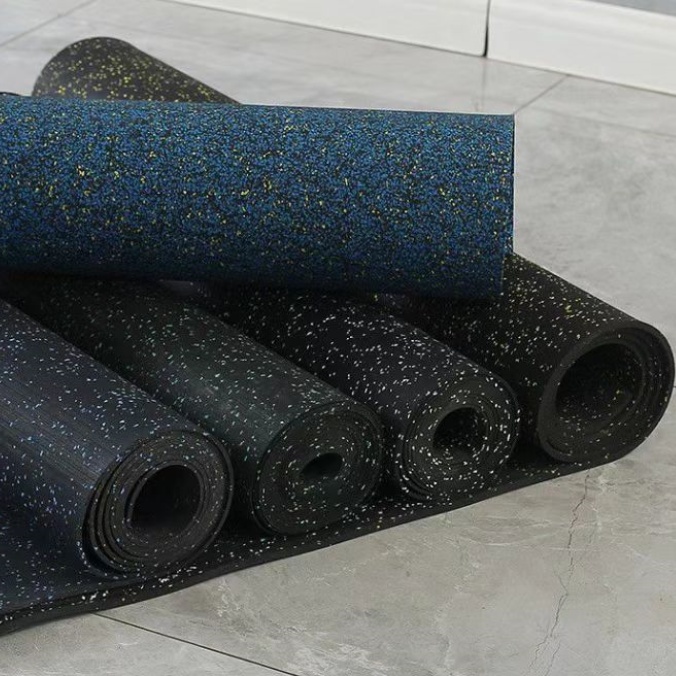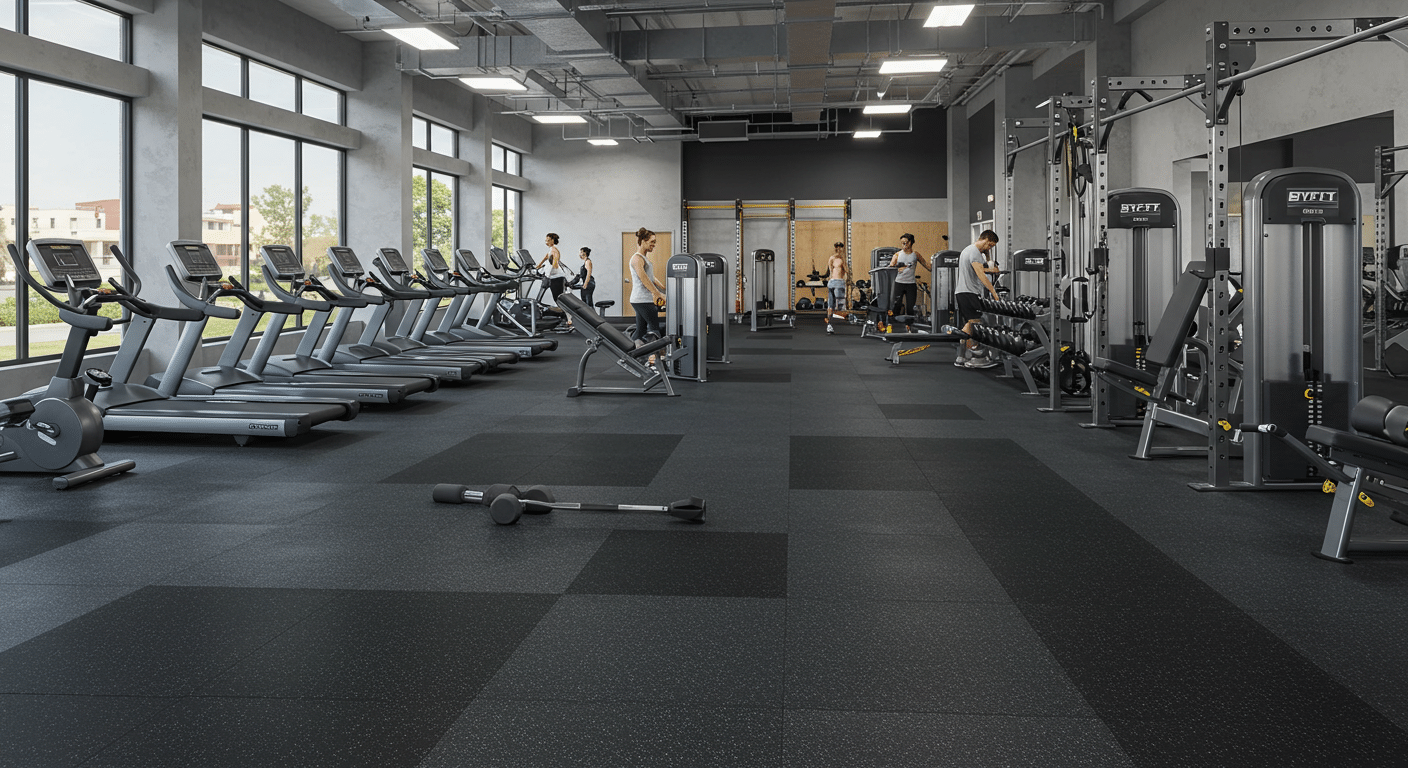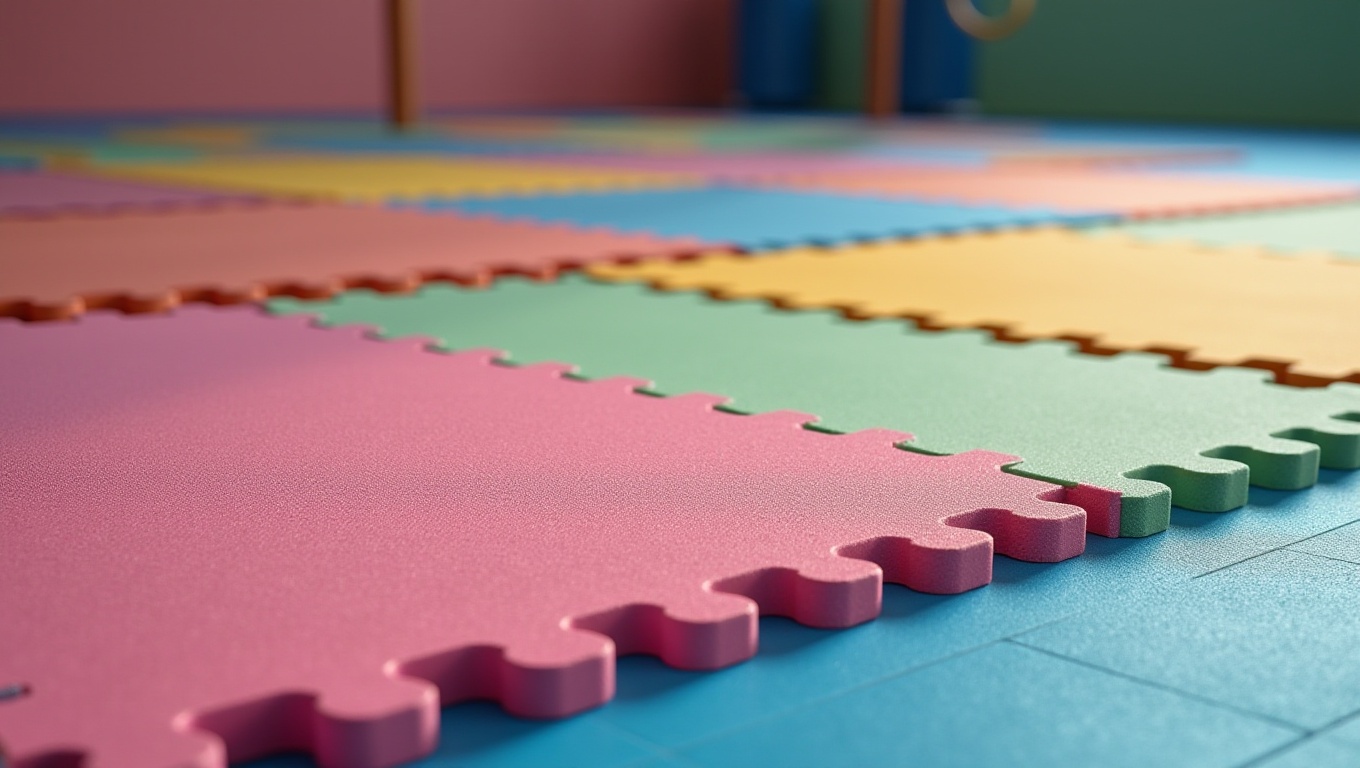Worried about what your gym floor is made of and if it’s the right choice for you? It’s a common concern, especially with so many options available.
The best material for gym flooring is generally rubber, due to its durability, shock absorption, and versatility. However, other options like foam, vinyl, and even turf exist, each with its pros and cons.
The world of gym flooring can seem complex, but understanding the basics can make a big difference. Let’s explore the various materials and help you choose the best fit.
What Is the Best Material for Gym Flooring?
Feeling overwhelmed by the choice between rubber, foam, vinyl, and turf for your gym floor? You’re not alone, it’s a critical decision.
Rubber is often considered the best overall material due to its durability, shock absorption, slip resistance, and versatility. However, the "best" material depends on your specific needs and budget.
](https://www.byfitgear.com/wp-content/uploads/2025/03/BYFIT-Gym-Rubber-Flooring-Options.jpeg) Rubber Flooring Options
Rubber Flooring Options
What Are the Different Types of Gym Flooring?
There’s a wide array of gym flooring, from rubber rolls and tiles to foam mats1, PVC, and artificial turf. It gets confusing.
Different types include rubber (rolls, tiles, mats), foam (tiles, mats), PVC (tiles, rolls), and artificial turf. Each caters to different activities and budgets, varying in durability, shock absorption, and ease of installation.
Let’s take a look at the common gym floor types:
| Flooring Type | Pros | Cons | Best For |
|---|---|---|---|
| Rubber | Durable, shock-absorbing, slip-resistant, versatile, easy to clean | Can be expensive, heavy, may have an odor initially | Weightlifting, CrossFit, general purpose |
| Foam | Affordable, comfortable, lightweight, easy to install | Less durable, can indent easily, not ideal for heavy weights | Yoga, Pilates, bodyweight exercises |
| PVC | Water-resistant, durable, easy to clean, versatile | Can be slippery, less shock absorption than rubber | General purpose, areas with moisture |
| Artificial Turf | Durable, provides good traction, suitable for sled pushes and agility drills | Can be abrasive, not ideal for all exercises, requires more maintenance | Functional fitness, agility training |
| Hardwood | Aesthetically pleasing, provides good bounce, suitable for basketball and other court sports. | expensive, not moisture resistence, requires more maintenance. | Basketball, volleyball, and dance. |
| Carpet | Provides some cushioning, helps reduce noise levels. | It can be difficult to clean, stains easily, and is not very durable, and may not be suitable for all. | Low-impact exercises and stretching. |
| Cork | Environmentally friendly, provides good shock absorption, antimicrobial properties. | Less durable than rubber, can be damaged by heavy weights, sensitive to moisture. | Yoga, Pilates, and light weight training. |
| Vinyl | Available in a wide variety of designs and colors, durable, easy to clean and maintain. | Less shock absorption than rubber, can be slippery when wet. | Aerobics, dance, and general fitness areas. |
BYFIT specializes in providing top-quality, customizable rubber flooring2 solutions. Because we are factory direct, we can offer wholesale prices. Contact us at [email protected] to learn more.
Is Rubber or Foam Better for a Home Gym?
Debating between rubber and foam for your home gym? It’s a common dilemma, with each having its strengths.
For a home gym used for weightlifting or high-impact activities, rubber is superior due to its durability and shock absorption. Foam is better suited for lighter activities like yoga or bodyweight exercises.
| Feature | Rubber | Foam |
|---|---|---|
| Durability | High, resists heavy weights and impact | Low, susceptible to damage and indentation |
| Shock Absorption | Excellent, protects joints | Moderate, provides some cushioning |
| Cost | Higher | Lower |
| Best Use | Weightlifting, high-impact exercises | Yoga, Pilates, light exercises |
If your primary concern is heavy lifting, BYFIT’s high-density rubber flooring is an excellent choice. Our rubber achieves 1100kg/m³ density at 8mm thickness through 300-ton pressing, offering 35% higher tear resistance.
What Thickness of Rubber Mat Is Best for a Home Gym?
Unsure about the right rubber mat thickness for your home gym? Too thin, and you risk damage; too thick, and it’s overkill.
For a home gym, a rubber mat thickness3 of 8mm to 10mm is generally sufficient for most activities, including weightlifting. For heavier lifting or CrossFit, consider 15mm or thicker.
| Activity Level | Recommended Thickness |
|---|---|
| Light Use (Yoga, etc.) | 4mm – 8mm |
| General Use | 8mm – 10mm |
| Heavy Lifting | 10mm – 15mm |
| CrossFit | 15mm+ |
While standardized rubber tiles are cheap, modular customization is the key. BYFIT’s interlocking rubber blocks (6-12mm thickness options) let gyms expand spaces easily and support Logo engraving and anti-slip textures
What Is the Rubber Flooring in Gyms Called?
Ever wondered what that ubiquitous black, speckled flooring in gyms is actually called? It’s more than just "rubber flooring."
The rubber flooring commonly found in gyms is often referred to as rolled rubber flooring, rubber matting, or rubber tiles. The specific type may also be identified by its composition, such as SBR rubber4 or EPDM rubber5.
 Rolled Rubber Flooring
Rolled Rubber Flooring
What Are Rubber Gym Mats Made Of?
Concerned about the composition of rubber gym mats? It’s a valid question, especially with potential health and environmental implications.
Rubber gym mats are typically made from recycled rubber (often from tires), known as SBR (styrene-butadiene rubber). Some may also contain EPDM (ethylene propylene diene monomer) granules for added color and UV resistance.
| Material | Description |
|---|---|
| SBR Rubber | Recycled rubber, often from tires, providing durability and shock absorption. |
| EPDM Granules | Ethylene propylene diene monomer, adds color, UV resistance, and durability. |
| Polyurethane Binder | A binding agent that holds the rubber crumb together. |
BYFIT’s patented process converts industrial waste rubber into high-density foam layers, reducing the bad effects while boosting shock absorption by 40%.
Is Gym Flooring Toxic?
Worried about potential toxins in gym flooring? It’s a legitimate concern, especially with prolonged exposure.
Some gym flooring, particularly older or lower-quality rubber flooring, may contain volatile organic compounds (VOCs) or other chemicals that can off-gas. However, many manufacturers now produce low-VOC6 or VOC-free options.
| Certification | Description |
|---|---|
| Low-VOC | Indicates reduced emissions of volatile organic compounds, improving indoor air quality. |
| VOC-Free | Contains no volatile organic compounds. |
| TÜV Rheinland Class IV | Meets stringent standards for low chemical emissions, suitable for food contact.(BYFIT Flooring) |
BYFIT adopts TÜV Rheinland Class IV food-contact standards(PAHs<0.1ppm, 1/50 of EU toy limits), replacing chemical vulcanization with microwave desulfurization to achieve safe commercial rubber.
How Do You Make Rubber Gym Flooring?
Ever wondered how that tough, resilient gym flooring is actually manufactured? It’s a fascinating process.
Rubber gym flooring is typically made by combining recycled rubber crumb with a binder (usually polyurethane) and pressing it under high heat and pressure. The mixture is then cured and cut into rolls or tiles.
This can be shown in the following steps:
-
Preparation of Raw Materials:
- Collect and clean recycled rubber crumb, often from used tires.
- Prepare a polyurethane binder, which will hold the rubber crumb together.
-
Mixing:
- Combine the rubber crumb and polyurethane binder in a large mixer.
- Ensure thorough mixing for even distribution of the binder.
-
Pressing:
- Pour the mixture into a mold.
- Apply high pressure and heat using a hydraulic press. The heat activates the binder, and the pressure compacts the mixture.
-
Curing:
- Allow the pressed material to cure, which solidifies the rubber.
- Maintain a controlled temperature and humidity during curing.
-
Cutting and Finishing:
- Once cured, remove the large block of rubber from the mold.
- Cut the block into desired shapes and sizes, such as rolls or tiles.
- Inspect for quality and finish the edges for a polished look.
BYFIT’s 20 production lines offer full digital traceability, using scannable QR codes for raw batches, QC videos, and logistics tracking.
Why Is Rubber Used for Gym Flooring?
Why is rubber the go-to choice for gym flooring? It seems like there might be other options.
Rubber is used for gym flooring due to its exceptional durability7, shock absorption, slip resistance8, and ability to withstand heavy weights and high-impact activities. It also provides a comfortable and safe surface for exercise.
 Benefits of Rubber Flooring
Benefits of Rubber Flooring
What Are the Benefits of Rubber Flooring?
Wondering about the specific advantages of rubber flooring beyond the obvious? There’s more to it than meets the eye.
Benefits of rubber flooring include durability, shock absorption9, slip resistance, noise reduction, ease of cleaning, water resistance, and versatility for various activities.
Here is a breakdown of these benefits:
- Durability: Withstands heavy use and dropped weights.
- Shock Absorption: Protects joints and reduces impact.
- Slip Resistance: Provides a safe surface, even when wet.
- Noise Reduction: Dampens sound from dropped weights and activity.
- Easy to Clean: Simple to maintain with regular sweeping and mopping.
- Water Resistance: Prevents damage from spills and moisture.
- Versatility: Suits a wide range of exercises and equipment.
Is Rubber Flooring Good for a Home Gym?
Considering rubber flooring for your home gym, but not sure if it’s the right fit? It’s a significant investment.
Yes, rubber flooring is an excellent choice for a home gym, providing a durable, safe, and comfortable surface for various exercises, from weightlifting to yoga.
And at BYFIT we offer many types of rubber flooring to suit different needs. We can offer you the perfect product.
How Long Does Rubber Gym Flooring Last?
Wondering about the lifespan of rubber gym flooring? It’s important to know how long your investment will hold up.
High-quality rubber gym flooring, properly installed and maintained, can last for 10-20 years or even longer, making it a worthwhile long-term investment.
The following things will make your rubber gym flooring last longer:
| Maintenance Step | Frequency |
|---|---|
| Sweep or Vacuum | Daily or as needed |
| Damp Mop | Weekly |
| Address Spills | Immediately |
| Inspect for Damage | Monthly |
What Type of Flooring Is Used in Commercial Gyms?
Curious about the flooring choices made by commercial gyms? They have specific needs and high traffic to consider.
Commercial gyms often use rubber flooring (rolls or tiles) due to its durability, shock absorption, and ability to withstand heavy use. Other options include PVC flooring, artificial turf, and specialized flooring for specific areas.
 Commercial Gym Flooring
Commercial Gym Flooring
How Thick Should Gym Flooring Be?
Unsure about the ideal thickness for gym flooring? It’s a crucial factor for both performance and safety.
Gym flooring thickness depends on the intended use. For general fitness areas, 8mm-10mm is often sufficient. For heavy weightlifting or CrossFit, 15mm or thicker is recommended.
Remember, it is not just about thickness. BYFIT’s commercial-grade rubber (SBR/NBR blend) achieves 1100kg/m³ density at 8mm thickness.
What Is the Best Flooring for CrossFit?
Choosing flooring for CrossFit is tricky, given the variety of exercises involved. It needs to handle everything from heavy lifting to jumping.
The best flooring for CrossFit is typically high-density rubber, at least 15mm thick, to withstand the impact of dropped weights and provide a stable surface for various movements. Some gyms use a combination of rubber and turf.
BYFIT’s "Lock & Lift" dual-layer system (15mm anti-slip rubber + 5mm shock-absorbing EVA) enables zone-specific performance. This lets gyms have 200psi compression strength for deadlift areas and 75% impact absorption for plyo zones.
Are PVC Tiles Good for a Gym?
Considering PVC tiles for a gym, but unsure if they’re a good alternative to rubber? They offer some advantages.
PVC tiles10 can be a good option for a gym, particularly for general fitness areas or spaces requiring water resistance. However, they may not offer the same level of shock absorption as rubber, especially for heavy weightlifting.
While they offer the below benefits:
- Water Resistance: Ideal for areas prone to spills or moisture.
- Durability: Can withstand regular use and moderate weight.
- Easy to Clean: Simple to maintain with regular mopping.
- Versatility: Suitable for various fitness activities.
- Cost-Effective: Often more affordable than rubber options.
They do not offer the same level of shock absorbtion that rubber does.
Conclusion
Gym flooring comes in various materials, but rubber stands out for its durability and versatility. Choosing the right material and thickness depends on your specific needs, whether it’s for a home gym, a commercial facility, or a specialized CrossFit space.
-
Learn about the pros and cons of foam mats versus rubber to determine the best flooring for your workout needs. ↩
-
Explore the advantages of rubber flooring, including durability and shock absorption, to make an informed choice for your gym. ↩
-
Find out the recommended rubber mat thickness for various activities to ensure safety and performance in your home gym. ↩
-
Explore the significance of SBR rubber in gym flooring, known for its durability and shock absorption, making it ideal for fitness environments. ↩
-
Learn about EPDM rubber’s advantages, including color retention and UV resistance, enhancing the longevity of gym flooring. ↩
-
Understand the importance of low-VOC flooring for better indoor air quality, ensuring a healthier workout environment. ↩
-
Exploring durability in gym flooring will guide you in making a long-lasting investment for your fitness space. ↩
-
Learning about slip resistance can ensure a safer workout environment, reducing the risk of injuries during exercise. ↩
-
Understanding shock absorption can help you choose the best flooring for joint protection and comfort during workouts. ↩
-
Learn about the pros and cons of PVC tiles for gym flooring, especially their water resistance and maintenance benefits. ↩



